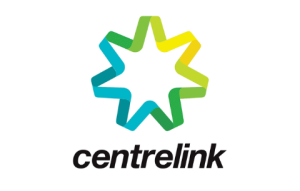Care is provided:
- In people’s homes
- In the community
- In aged care homes (also known as nursing homes or residential aged care facilities)
A wide variety of providers deliver aged care services.
The Australian Government is the primary funder and regulator of the aged care system in Australia.
The Aged Care Act 1997 (the Act) is the main law covering government-funded aged care. It sets out rules for funding, regulation, approval of providers, quality of care, and the rights of people receiving care.
How is funding for aged care provided?
The Australian Government subsidises residential aged care in Australia.
It does this by paying subsidies and supplements to approved providers.
These subsidies are paid on behalf of each person eligible to receive government-subsidised residential aged care.
What kind of subsidised age care is funding provided for?
Subsidised care provided under the Act consists of home support, home care, residential care and flexible care.
1. Home support
The Commonwealth Home Support Programme (CHSP) provides entry-level home support services to assist older people, as well as respite services to support carers.
The CHSP is designed to help people remain independent and safe at home with services available at home or in the community.
Services include:
- social support
- Transport
- help with domestic chores
- personal care
- home maintenance
- home modification
- nursing care
- meals and allied health services.
How is home support funded?
CHSP providers receive Australian Government funding through grant agreements
Clients also pay a contribution (which varies between providers)
2. Home care
This is a service for older people requiring a greater level of support to remain at home, the Home Care Packages (HCP) Program offers coordinated packages of care from an approved home care provider.
HCPs are designed to provide more comprehensive care and support than the CHSP and seek to help people maintain their independence and remain safely at home. Each package of services is customised to meet the individual’s needs.
There are four levels of HCP:
- Level 1 – Basic care needs
- Level 2 – Low-level care needs
- Level 3 – Intermediate care needs
- Level 4 – High-level care needs
How is home care funded?
The total amount of a Home Care Package is made up of:
- The Australian Government’s contribution:
- the subsidy (and supplements, if eligible)
- Your contribution (the fees you may be asked to pay):
- your basic daily fee (which everyone receiving a Home Care Package can be asked to pay)
- your income-tested care fee (if you have been assessed as being able to contribute)
- any additional fees you agree to.
Together, these funds cover your care services as well as the package management costs from your provider to organise and manage your package services.
3. Residential care
Residential aged care is provided in aged care homes on a permanent or respite (short-term) basis. It is for people who need more care than can be provided in their own homes. Services include:
- personal care
- accommodation
- laundry and meals
- nursing
- some allied health services.
How is residential care funded?
Residential aged care is funded by both:
- The Australian Government who pays subsidies and supplements to approved providers for each resident.
- Contributions from residents who pay costs and fees which contribute to the cost of their care and accommodation. All residents can be asked to pay a basic daily fee set at 85 per cent of the single basic age pension. Some residents also pay a means-tested care fee based on an assessment of their income and assets.
Some residents will have their accommodation costs met in full or in part by the Australian Government, but those with greater means are required to pay an accommodation price (formerly known as a bond) agreed with the aged care home.
4. Flexible care
Flexible care caters for older people who need a different approach to care than is offered by mainstream home and residential services. Four types of flexible care are provided under the Act:
- The Transition Care Programme
- The Short-Term Restorative Care Programme
- The Multi-Purpose Services Program
- The Innovative Care Program
How is the Transition Care Programme funded?
This is a program that provides up to 12 weeks of care and recovery on discharge from hospital. This can be provided in aged care homes, in the community or in a person’s home.
It is jointly funded by the Australian and state and territory governments.
How is the Short-Term Restorative Care Programme funded?
This is a programme that is available to older people to reverse or slow a decline in function (not linked to a recent hospital admission), which may help them to stay at home or delay entry to higher levels of care. It provides up to eight weeks of services to improve wellbeing and function.
It is subsidised by the Australian Government.
How is the Multi-Purpose Services Program funded?
This is a program that provides integrated health and aged care services in small rural and remote communities
It is jointly funded by Australian and state and territory governments to serve regions that cannot support stand-alone hospitals or aged care homes.
How is the Innovative Care Programme funded?
This program consists of a small number of grandfathered places from pilot projects of top-up services for people with disability living in state-funded supported accommodation. No new places are being allocated.
This program is subsidised by the Australian Government.
Information on this website is of a general nature only and has not considered your particular circumstances. Before making any decision to act, you should consider whether the strategies are suitable for your personal situation and needs.






